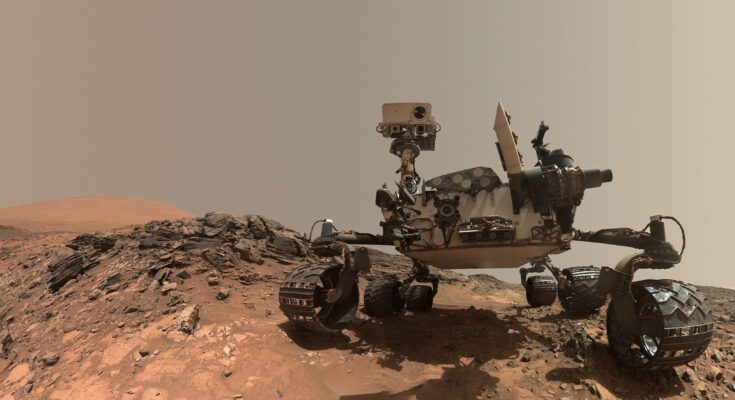After driving over and cracking open a rock, NASA’s Curiosity Mars Rover has discovered something never before seen by scientists on the red planet: yellow sulfur crystals.
The NASA rover has been exploring a region of Mars filled with sulfates – a type of salt which contains sulfur and forms as water evaporates – since October last year. However, where past discoveries have been made of sulfur mixed with other materials, the inside of this recently investigated rock contained pure sulfur.
It’s not yet clear whether there is any kind of relationship between the pure sulfur and the sulfur-based minerals in the area.
Sulfur is commonly associated with the stench of rotten eggs, but pure, elemental sulfur has no smell. The substance is produced in a very narrow range of conditions, which scientists have not – until now – associated with the studied area. NASA’s Curiosity Rover found a lot of it too – a whole field full of bright rocks that are akin to the one the vehicle cracked.
“Finding a field of stones made of pure sulfur is like finding an oasis in the desert,” Curiosity’s project scientist, Ashwin Vasavada of NASA’s Jet Propulsion Laboratory in Southern California told NASA’s press officers. “It shouldn’t be there, so now we have to explain it. Discovering strange and unexpected things is what makes planetary exploration so exciting.”
Previous Discoveries by NASA’s Curiosity Rover
This latest discovery is one of several that NASA’s Curiosity rover has made while driving through Gediz Vallis channel, a winding groove that trails down part of the three-mile-tall Mount Sharp, the base of which the rover has been ascending since 2014.
The Curiosity rover’s mission is to understand the layers of the mountain and study where and when the red planet’s terrain may have given the nutrients required for microbial life, if an ever actually formed on Mars.
Two years ago a piece of sediment discovered by NASA’s Curiosity Rover was found to contain carbon — a possible trace of ancient life on the red planet.
Carbon is a tell-tale sign of much bigger life processes, as carbon is the building block of organisms and goes through its own carbon cycle to recycle atoms everywhere in the environment on Earth. Carbon moves from the atmosphere to the ground and then back to the atmosphere.
Thus, researchers can use carbon atoms to trace a larger story of ancient life on Mars. The Curiosity Rover first touched down on the Gale Crater on Mars in August 2021. The crater, which is 96 miles long, was created by a meteor that struck Mars’s surface roughly 3.5 billion to 3.8 billion years ago. The crater is believed to have once been a lake.
Curiosity drilled into the sediment of the Gale Crater between August 2021 and July 2021. The rover then heated those samples to 1,562 degrees Fahrenheit, and the elements contained in the samples separated, releasing the carbon atoms.



